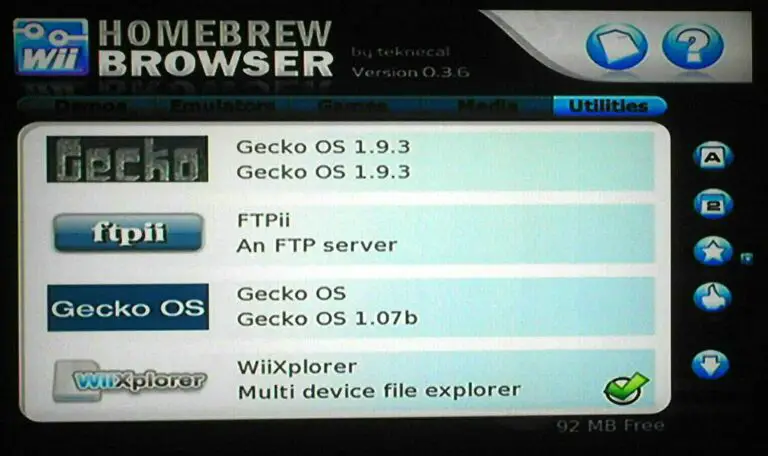
And third, unauthorized apps simply take money out of the Japanese gaming giant’s pocket. Two, while those in the Homebrew community adamantly deny using the hack to run pirated games, the fact of the matter remains that the heck can indeed be exploited for such a purpose. The reason Nintendo opposes Homebrew is threefold: one, opening up the box to rogue and unmanaged applications is a potential security risk, allowing for a third-party unmanaged vector for malware. The currently used IOS exploit is courtesy of tueidj.”
HOMEBREW FOR WII U INSTALL
Consequently, we have a new release with a new version of The Homebrew Channel this will install on both Wii consoles, and inside the virtual Wii sandbox inside the Wii U.

It added, “They also blocked our old title ID.
HOMEBREW FOR WII U UPDATE
“There never was a Wii system update for this, the fixed IOS versions can only be found on a Wii U.” “Despite all of the anti-reverse-engineering tricks we put into our last installment of the HackMii Installer, Nintendo managed to find the IOS exploit we used to install The Homebrew Channel and fix it sometime within the last two years,” the group explained in a post on the Hackmii forum. After installation, the channel is accessible from the Wii Menu just like any other Wii channel. (this new OP is still a work in progress, current maintainer is me if something needs fixing!).The Homebrew Channel, a self-updating application created by hacking group Team Twiizers, allows users to easily load and use non-Nintendo-authorized applications, including emulators for Atari and other classic gaming consoles, different media players and other utilities that allow the Wii to function as a media center and DVD player.
:max_bytes(150000):strip_icc()/how-to-install-the-wii-homebrew-channel-2498513-080309224bff46869a76732530fd002f.png)
If you want to see full-speed PSX emulation on these platforms, why not throw in a few dollars to show your support? In any case, here's a link to the bounty for a dynarec on PCs and smartphones, and here's a separate bounty for the Wii U specifically. It's advisable to stay out of the bounties' comment sections: they're meant for development discussion and support of the project, but there's been some high emotions lately and concerns are being voiced about scaring off developers. To aid motivation, the community has set up bounties offering cash to whoever takes the project on.
HOMEBREW FOR WII U PC
Once a dynarec is ready for conventional platforms (like PC and smartphones) work can begin on one for PowerPC, the type of CPU the Wii U uses.ĭynarecs, however, are very complex pieces of software, and take time and knowledge of both the PSX and target platform to write. This eliminates a lot of emulation overhead and makes for significantly faster emulation. Work is underway by the RetroArch devs to add a dynamic recompiler (dynarec) to Beetle PSX, which allows instructions to be translated ahead of time from the PSX's native MIPS architecture to the native format of whatever platform is doing the emulation. Glad you asked! The PSX is one of the aforementioned difficult cores that we've actually started working on (which is why you'll see it talked about so much). Nintendo - SNES / Famicom (Snes9x 2005 Plus) Magnavox - Odyssey2 / Phillips Videopac+ (O2EM) SNK - Neo Geo Pocket / Color (Beetle NeoPop)

It's recommended that your "roms" folder has this folder structure: It helps the program match your roms with the images in Retroarch database. To make the process painless always prefer NO-INTRO rom sets as they have a standard naming convention. In this example playlists and thumbnails will be stored in sd:/retroarch/cores

The PC build of Retroarch can generate lists and the format is compatible with Wii U or alternatively you can use RetroArch Playlist Buddy to generate your playlists and thumbnails. You can generate your list using Online Updater, though this is prone to fail if you have a large number of games. Like most other paths, you can set your own in Retroarch under Settings > Directory. These files are stored in the "playlist" folder. One of the toughest parts involved in getting the best RetroArch has to offer is setting up the "playlist" files (.lpl) which allow you to make put preset games into an easily-accessible place in the GUI, rather than having to go through the filebrowser and reload cores.


 0 kommentar(er)
0 kommentar(er)
